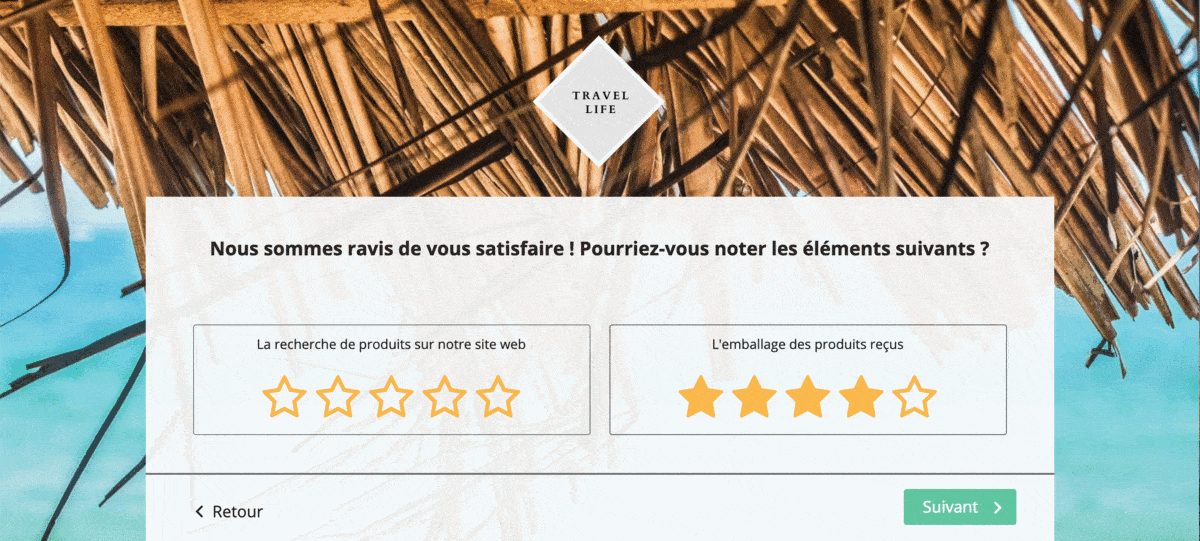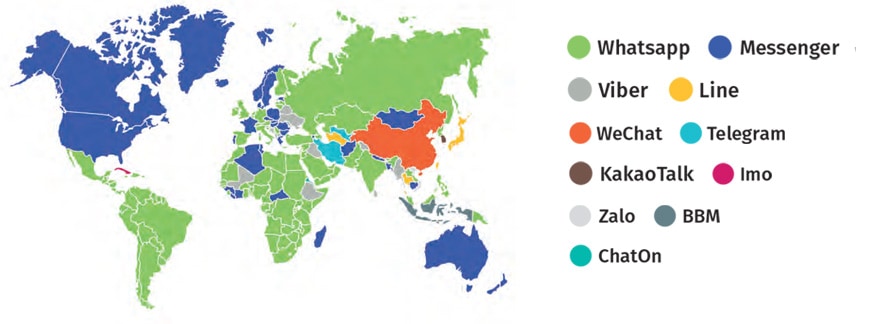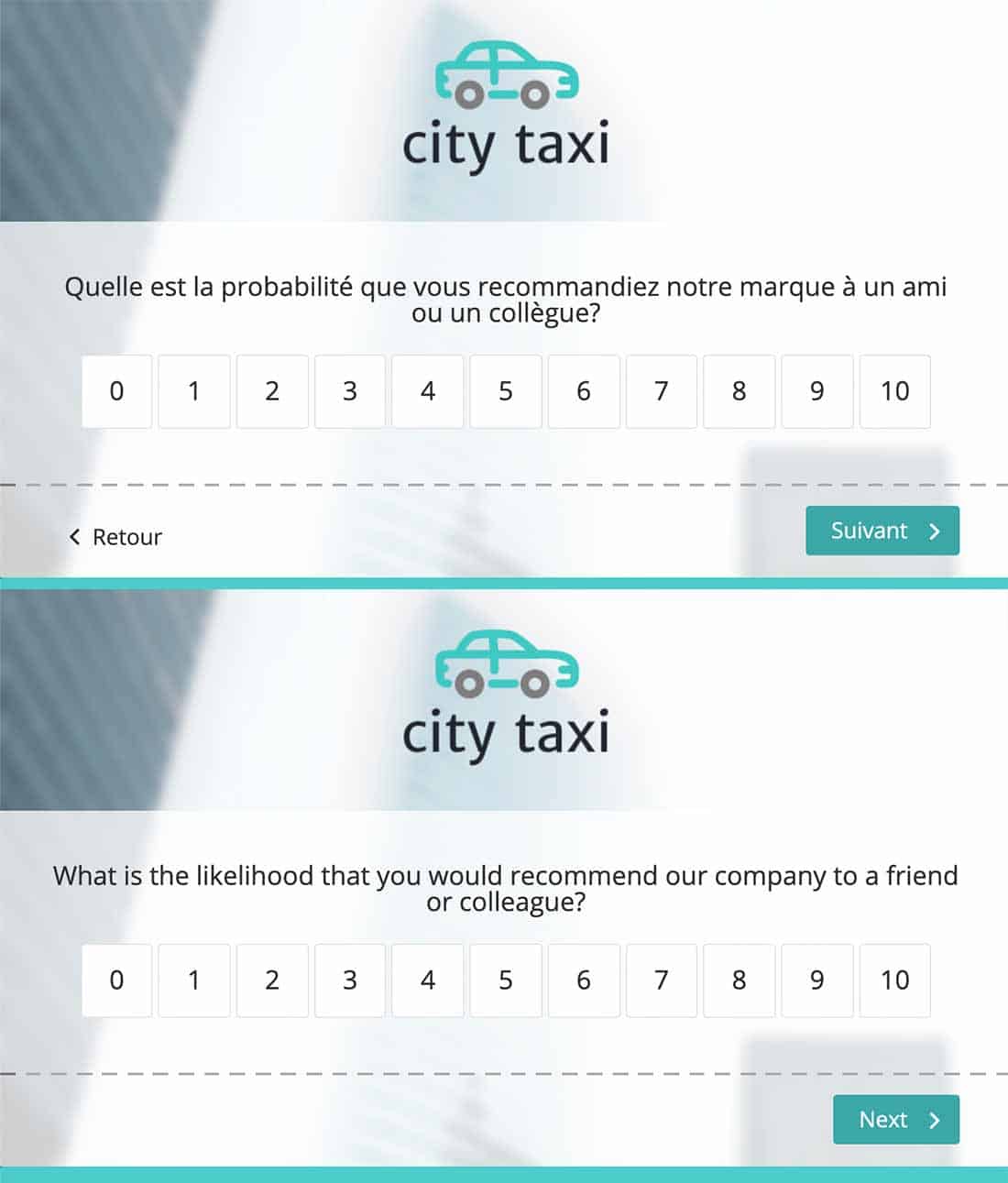Do you want to deploy international customer studies, by adapting your surveys to each country and target’s specificities? Then you’re in luck! Not only is it possible, but we can help you make it happen. MyFeelBack’s solution provides all the functionalities you need to successfully deploy your surveys abroad – adapting questions and modes of...
Do you want to deploy international customer studies, by adapting your surveys to each country and target’s specificities? Then you’re in luck! Not only is it possible, but we can help you make it happen.
MyFeelBack’s solution provides all the functionalities you need to successfully deploy your surveys abroad – adapting questions and modes of deployment, translating surveys, creating an adapted monitoring process…
This article will present the main steps to follow and the best practices to apply, in order to successfully deploy your customer surveys around the world.
What is an International Survey? When are they used?
To put it simply, an international survey is a survey deployed in several countries. There are several use cases for international surveys. You may need to create an international survey in the event of:
- “World” customer studies. You work for a multinational group or for a company that sells to an international clientele, and you want to carry out a global study of your customers, their typology, etc.
- Customer studies adapted to a territory or language. You want to create a customer survey template that can then be adapted to different territories, languages, and subsidiaries.
- International market research. Surveys are an excellent tool to successfully carry out market research alongside your target clientele, etc.
2 Options to Create an International Survey
There are 2 options available when creating an international survey:
- Option 1 – Create one campaign and adapt the survey language by using an automatic translation module. This makes sense if you are a company with an international clientele, but you are not an international organisation.

- Option 2 – Create a survey campaign per country or language. This option increases survey customisation possibilities.
This article will focus on the second option and touch briefly on the first at the end. Here are the key steps to follow when creating a survey with option 2:
- Define your survey goal. You want to deploy an international survey. What exactly do you want to know about your existing or potential (in the event of an international market research study) customers? To what ends? These questions will help you identify your questions and build your “model” survey.
- Create your model survey, by defining the structure, length and questions.
- Adapt your questions and answer choices to the different countries, so as to adapt the survey to local specificities and cultures.
- Adapt the modes of deployment, in order to adapt to local specificities (for example: use WeChat for a deployment in China).

Credit: nipo
- Translate your surveys into each target language.
- Create an appropriate monitoring process.
In a group-type organisation, the division of roles and tasks between head office and subsidiaries may vary. Head office could create the model survey and then send it to each subsidiary to be adapted. There are other ways of functioning too, of course. Either way, MyFeelBack has a solution and offers groups a Parent Account / Child Account organisation when implementing Option 2.
Let’s now look at the 4 last steps in further detail.
1 – Adapt Questions and Answer Choices to Each Country
Let’s imagine that you have already created your generic survey model, and you now want to create campaigns per country. You therefore need to adapt your model survey.
The first step is to adapt your questions and answers. A few adjustments may be required.
With regards to the questions, there are 3 options:
- Keep the question as it is. For example, standard questions, such as “How likely are you to recommend our services to others?” (Net Promoter Score), or “How satisfied are you overall with our services?” (Customer Satisfaction Score), don’t require any local adaptation. You can keep exactly the same wording.
- Adjust the question’s wording. Adjustments can be minor (change of name, etc.) or more substantial. You can also use customisation variables to personalise your questions. For example, in the greeting “Hello X”, the variable X could be the surname, first name or both.
- Delete the question. Some questions may touch on sensitive topics for certain countries, such as questions about revenue, marital status, family, etc. Although such cases are relatively rare, it is probably best to simply delete the question.

As mentioned above, adjustments can also be made to the answer choices given to respondents.
Before translating an international survey, it is important to take the time to adapt your question and answer content. The MyFeelBack platform provides all the keys to managing survey variations in a simple and intuitive manner.
2 – Adapt International Survey Modes of Deployment
We also recommend adapting your international survey’s modes of deployment. As you may know, the MyFeelBack solution offers a multitude of options to customise the mode of deployment per country. You can deploy your MyFeelBack survey via email, on a website (button, pop-up, banner, chat, etc.), on social media, via SMS, an instant messaging service, or QRCode.
Remember that customers in different countries may use different channels. If you want to reach as many as possible, you need to define the right marketing targeting on a country-by-country basis. There are 2 tools available to help you identify the right targeting: customer knowledge and statistical surveys. For example, QR Codes are used a lot more in China than in other countries.

Credit: Scanova
Adapting your questions, answers and modes of deployment is key to carrying out a successful international customer study. The adaptation of surveys can also include other elements:
- Level of trust. Consumer trust in a brand can vary from one country to the next. In a country where trust is minimal, it may be best to strengthen any reassurance elements in the survey. And vice-versa.
- Rewards. In some countries, rewarding people for answering surveys is a widespread practice, etc.
Translating Surveys Into Each Language
It’s the first thing that comes to mind when creating an international survey, but translation is actually the final step. MyFeelBack’s solution provides three options:
- Translating the survey automatically. If you opt to create one campaign for all countries, we have an automatic translation module. For example, if you have designed a survey in French (source language) and you would also like to deploy it in English and Spanish, then MyFeelBack will automatically detect the respondent’s browser language and display the survey in the correct language.
- Translating the survey manually. If you opt for the solution highlighted in this article (one campaign = one country), then you will need to use the manual method.
- Importing the translation. You can also manage translations in an Excel document (one column per language) and import the translation in a .CSV format. This is another form of manual translation.
Monitoring via Filtered Dashboards
Once the international survey has been deployed, your respondents’ answers will be fed into your dashboards, enabling you to analyse the results and share them with your teams.
How do you build the reporting system for your international survey? There are several options available, depending on how your survey was designed.

Case 1 – You’re Managing the Survey in A Single Campaign
You are managing your survey in a single campaign. Sometimes, this organisation makes sense and saves valuable time when designing the survey. In this case, you can use the automatic translation module we mentioned earlier. But remember that this option is not feasible if you’re planning on:
- Adapting your list of questions to each country.
- Varying your answer choices depending on the country.
- Adapting the mode of deployment to each country.
Managing an international survey in a single campaign makes it easier to monitor. You can view your campaign’s performance, as well as the answers collected, in real time. You can then compare the answers per language and use filtering systems to customise reports shared with different countries.
Case 2 – You’re Creating a Survey per Language/Country Based on a Model Survey
We have focused on this approach throughout the article. It takes longer to set up, but it responds to a greater number of cases of use – you design a standard survey which you then adapt to each country by creating a campaign per country.
In this case, your monitoring process includes two levels:
- A “country” level, which is the “campaign” level. You can measure survey results in the campaign analytics table.
- A “global” level. You can build a cross-campaign table that aggregates data from all the international survey’s campaigns. This dashboard will enable you to make country-by-country comparisons and obtain overall results.
You can structure your international survey monitoring process in any way you like with MyFeelBack.
Our article has come to an end. It is a vast topic and there is still lots more to say! If you have any questions or would like further information about certain points, then feel free to contact us.








